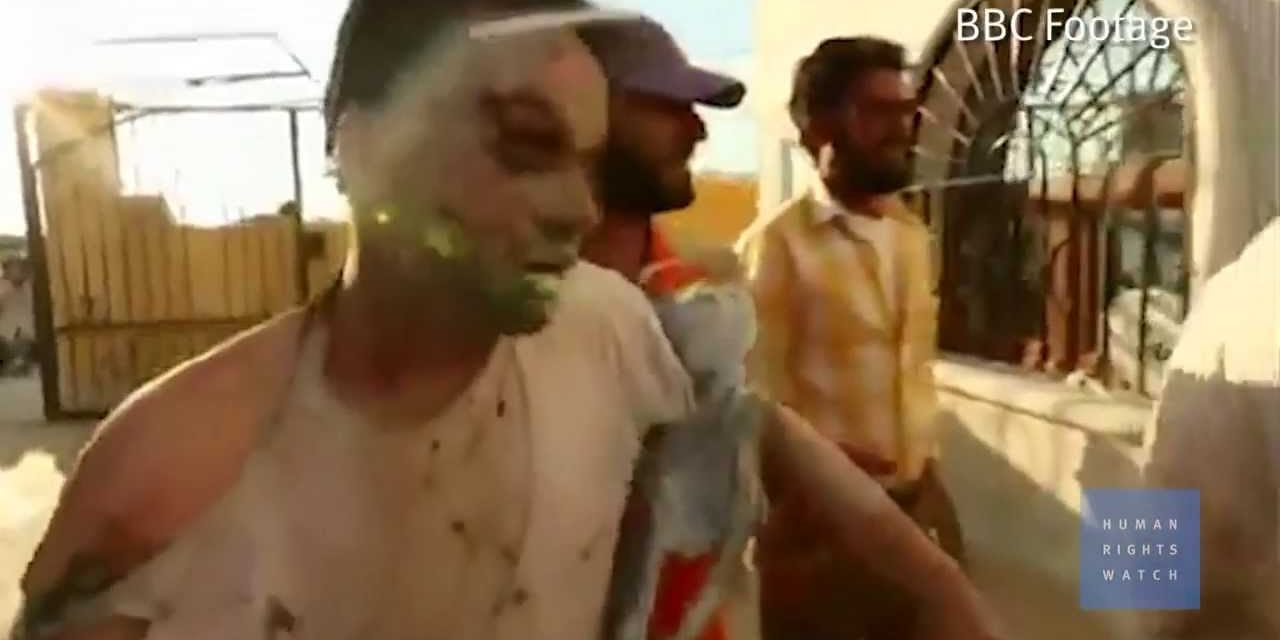Human Rights Watch reports that Syria’s regime has carried out at least 56 attacks with incendiary weapons from November 2012 to September 2013.
In the 20-page report, including a video and map of the attacks sites, Human Rights Watch and the and the Violations Documentation Center use field investigations, witness accounts, and film and photos to document the attacks. They detail four assaults that killed at least 41 civilians and wounded 71 others.
Two of the attacks were on schools in residential neighborhoods.
Incendiary weapons produce heat and fire through the chemical reaction of a flammable substance. The attacks cause extremely painful burns that are difficult to treat, and start fires that destroy objects and infrastructure.
Dr. Saleyha Ahsan, a British emergency medicine doctor volunteering in a hospital in Aleppo Province, testified about an attack on August 26, 2013. She saw dozens of victims from an incendiary weapons attack on a school filled with teenagers studying for exam:
One patient with 90 percent third-degree burns arrived alive at the hospital. The clothes had been burned off him. It was the most horrific injury I have ever seen in a live patient. Only his eyes moved.
Syria is not party to the 1980 Convention on Conventional Weapons or its Protocol III banning the use of air-delivered incendiary weapons in areas with “concentrations of civilians”.
Human Rights Watch will present its findings at the annual meeting of the Convention on Conventional Weapons in Geneva on Tuesday.

